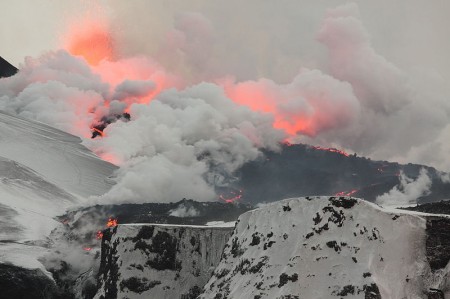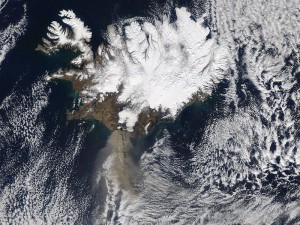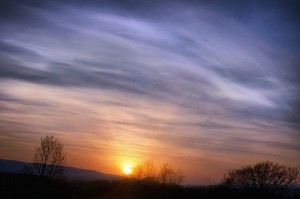
Current events often generate the teachable moments we’re always seeking in order to strike students’ imagination. The eruption of Eyjafjallajökull is a prime example. I’ve already used it to point out the intersection of geothermal energy and plate tectonics, but there is so much more.

Eyjafjallajökull has been a wonderful subject for the art of photography. The image above is a great example but the time-lapse photos have been excellent. The photo to the right captures not just the stars streaking across the sky with a three minute exposure but the fiery red arcs of the volcanic ejecta.

One of the major benefits of the space program so far has been its Earth observing satellites. There is so much going on in the image to the left that it’s hard to know where to start. Why are there all those clouds over Iceland? (warmer land mass creates convection); what’s with the two plumes from the volcano, one concentrated high level and one disperse low level plume; fjords on the upwind side of the island and the straightened coastline on the lee; greenish plumes of glacier-ground, rock flour discharging into the ocean.

The dinosaurs were done in either by an asteroid impact in the Yucatan or the eruption of the massive flood volcanoes in Deccan, India, or quite probably both. Both of these events launched an enormous amount of ash, gas and fine particles into the upper atmosphere, blocking sunlight, causing global cooling. Well the ash from Eyjafjallajökull and the sulfur dioxide gas may be having a similar effect on Europe, and if there’s enough of it, on the world. The 1992 eruption of Mt. Pinatubo cooled the globe by about half a degree Celsius.